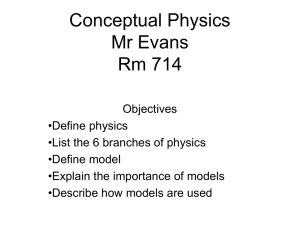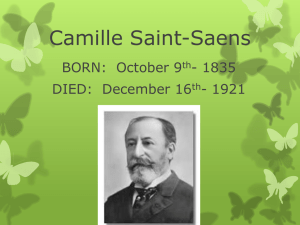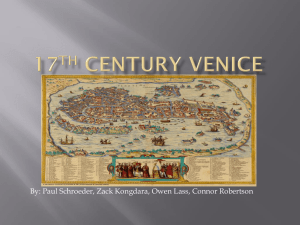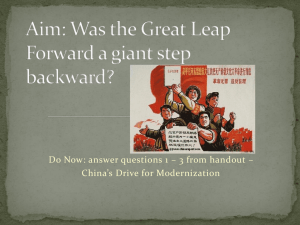paper 1. - kcse online
advertisement
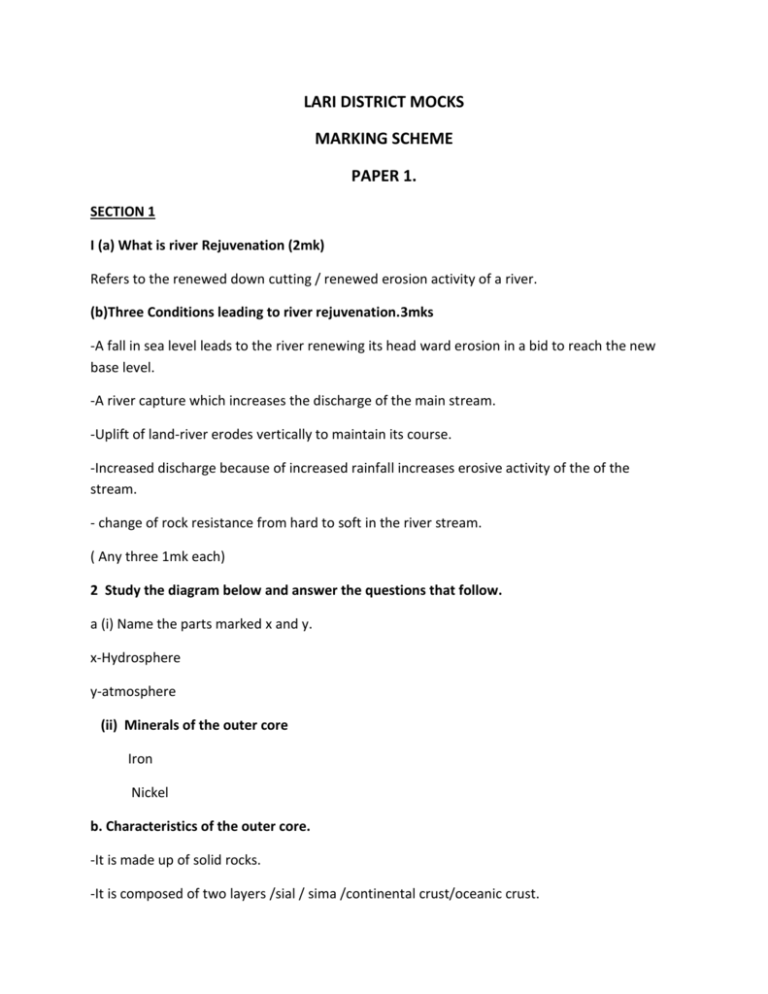
LARI DISTRICT MOCKS MARKING SCHEME PAPER 1. SECTION 1 I (a) What is river Rejuvenation (2mk) Refers to the renewed down cutting / renewed erosion activity of a river. (b)Three Conditions leading to river rejuvenation.3mks -A fall in sea level leads to the river renewing its head ward erosion in a bid to reach the new base level. -A river capture which increases the discharge of the main stream. -Uplift of land-river erodes vertically to maintain its course. -Increased discharge because of increased rainfall increases erosive activity of the of the stream. - change of rock resistance from hard to soft in the river stream. ( Any three 1mk each) 2 Study the diagram below and answer the questions that follow. a (i) Name the parts marked x and y. x-Hydrosphere y-atmosphere (ii) Minerals of the outer core Iron Nickel b. Characteristics of the outer core. -It is made up of solid rocks. -It is composed of two layers /sial / sima /continental crust/oceanic crust. -The sial is rich in silica and alluminium. -The sima is rich in silica and magnesium. -The sima rocks are plastic/flexible/not rigid. -The sima is made up of dense rocks /2.8-3.0 gmcc -The sima is made up of balsamic/igneous rocks. -The sial is made up of light rocks/2.7gmcc/floats on sima -The sial is made up of granitic/sedimentary/metamorphic rocks -The sial rocks are rigid /brittle. (Any 2 1mk each) 3(a) name the features marked X,Y and Z. (3MKS) X-Stalactite y- stalagmite z -limestone pillar. (b) Conditions favoring the location of an artesian well. (3mks) -The aquifer must be situated between impermeable rocks so that it retains water. -The aquifer must outcrop in a region which is a source of water -The aquifer must dip from the outcrop region to form a basin -The mouth of the well must has to be at a lower level than the outcrop area -The aquifer must be of some permeable materials. (Any 3 1mk each) 4(a) what is a rock 2mks A substance made up of minerals/a combination of mineral particles cemented together to form the solid part of the earth’s crust. (b) Characteristics of sedimentary rocks. -Found in layers /stratified -They have bedding planes -Most are non-crystalline. --They contain fossils. (Any 2 1mk each) SECTION 2 6 a (i) Position of the south west corner. Latitude 1 00’ Longitude 35 15’ (ii) Two man-made features in grid 3910. -Dam/reservoir -Huts - Other trucks -Foot paths (2x1=2mks) (iii) Height of the trigonometric station 1933 m (1mk) (iv) Magnetic declination 2 23’ (1mk) b. square 10cmx10cm 1mk Mark and labelling 1x5=5mks (5+1=6mks) c. Distribution of settlements in the area. -The area covered by swamps has no settlements. -The forested area has no settlements. -Some areas under plantation have no settlement. -There is linear settlement on the fringes/edges of plantations .e.g. To the southern side of Naisabu Estate. -There is dense settlement in the ministry of works camp in grid reference 2817. -Some areas occupied by plantations have few settlements in them. -There is dense settlement in Kitale municipality. (4x1=4mks) d (i) Two physical factors that influenced the location of Kitale town. -The gently sloping terrain as shown by the contours wide apart which is ideal for settlements and the construction of roads. -The high altitude (over 1880m) which makes the area experience cool climate ideal for settlement. (ii) Reasons for conducting a reconnaissance. -To help in identifying methods of data collection. -To help in formulating the objectives/ hypothesis of study. -To help in assembling appropriate apparatus/equipment/instrument for the study. -To help in estimating the cost of the study. -To contact the relevant authorities/seek permission for the study. -To help in preparing a work schedule. -To determine the appropriate route to be taken. -To identify problems likely to be experienced. (4x1=4mks) 7 (a) Three processes through which the wind transports in the desert -Suspension-The fine dust particles are lifted and suspended in the air. Eventually are blown away by wind currents. --Siltation-Large fragments/sand particles are lifted from the ground by eddy action. They are moved in a series of hops along wind currents. -Surface creep-The heavy materials/small stones/pebbles are dragged or rolled along the ground by wind currents. (6x1=6mks) (b) Formation of; (a) Bajada -Running water in a desert deposits material in a depression/low lying area/wadi. -Alluvial fans or cones are formed at the point where laghs join the wadi -With continued deposition alluvial fans/cones coalesce and join due to continued deposition-a continuous zone of deposited materials is formed. The feature will be called a bajada. (3x1=3mks) (ii)An oasis A pre-existing depression formed through faulting or otherwise is exposed to wind erosion. Wind eddies remove unconsolidated materials through deflation. The process of deflation is aided by weathering With continued deflation the level of the water table is reached Water oozes out of the ground and collects in the depression to form an oasis B. 3 Ways in which plants adapt themselves to desert conditions. (i)Some have taproots to reach water on the ground. (ii) Some have thin leaves to prevent loss of water in the atmosphere. (iii) Some have thick barks to prevent loss of water. (IV) Some have stomata under the leaves to prevent loss of water. (v) Some send their leaves during dry seasons (A. o.A) C. Methods of data collection other tan observation. Interviews Administering questionnaires Reading / content analysis. (ii) Dunes likely to be encountered Barchan Transverse dunes Seif dunes/longitudinal dunes 8a (i) what are earth quakes? Are sudden earth movements that cause vibrations/rumbling within the crust. (2x1=2mks) (ii)Types of earthquake waves Primary/push waves/p-waves. Secondary/shear/s-waves Longitudinal waves/l-waves (3x1=3mks) b Ways that the earth’s crust is affected by earthquakes -Cause lateral and vertical displacement of rocks. -Cause lowering or raisin the land. -Cause landslides or slumps. -lead to faulting of the the crust. -Lead to volcanic eruptions. (5x1=5mks) C (i) Formation of a rift valley through tensional forces (ii)4 effects of faulting -Faulting/faultscarps makes it difficult to construct transport lines. -Depressions in the rift valley contains water that forms lakes. -Faulting exposes minerals such diatomite. -Step faulting makes rivers to have waterfalls, rapids and cataracts. -The scarp slopes / step slopes tend to discourage settlement. -Some rivers such as Katanga in Uganda had their direction of flow changed. (4x1=4mks) (iii) Two advantages of studying faulted landscapes. -They would get first hand information about landforms resulting from faulting. -Enables the students to relate what they are taught in classrooms to what is in the field/ reality. -It breaks the classroom monotony/make learning interesting/ breaks boredom. 9 a (i) define Climate It is the average weather conditions of a place over a long period of time. (2x1=2mks) (ii)Effects of climate change on the physical environment. -Increase in temperature leads to increased rainfall/ melting of ice caps/ rising in sea level/high evaporation/ abnormal growth of plants. -Change in rainfall pattern leads to flooding/ rise in sea level/ drought/soil erosion by water. -Change in seasonal patterns leads to severe winters/ short summers, flooding/soil water deficiencies, shifting of vegetation zones/some plant/animal species would become extinct. -Change in winds/ air masses patterns leads to more frequent and more destructive cyclones/ high waves, flooding and wind erosion/ wind storms. (2x2=4mks) b (i) Characteristics of inter tropical convergence zone ITCZ. -It is a zone of low atmospheric pressure/doldrums/calm wind. -It is a zone within the tropics between 23.5 N and 23.5 S. -It is the zone where the north east and the south east trade winds converge. -It migrates to the North and to the south of the equator with the apparent movements of the overhead sun. -It is characterised by high temperatures because the moisture-laden winds rise and drop their moisture on this side first. (5x1=5mks) (ii) Formation of convectional rainfall. -Water in lake/sea is heated intensely by solar radiation -Maximum heating occurs in the afternoon. -Moisture laden air rises in convectional currents. -As the warm air rises it is cooled -The moisture laden air condenses at high altitudes -The condensed water vapor forms clouds which develop into cumuli- nimbus clouds with time. -The clouds give rise to heavy torrential rains accompanied by thunder and lightning and sometimes hail stones. (7x1=7mks) (iii) Problems associated with convectional rainfall in the lake region of Kenya. -The torrential rains cause floods which displace people. -The hail stones destroy crops -The strong winds blow off house roofs/uproot trees. -Lightning strikes cause death of people and animals/ destroy property. (3x1=3mks) c. Factors that influence climate (i)Latitude-Areas near the equator are hotter than those far away from the equator. This is due to a higher concentration of rays per unit area at the equator. The amount of solar insolation decreases pole wards since it passes through a longer distance of the atmosphere and therefore more interference. (ii)Aspect-In the northern hemisphere, outside the tropics, the north facing slopes are cooler than the south facing slopes because they do not receive direct insolation. The reverse is true for the southern hemisphere. Windward slopes are generally wetter than the leeward slopes. 10. Differentiate between the terms. (i)Vulcanicity and volcanicity. (4MKS) Vulcanicity refers to all forms of igneous activity that result in the intrusion of materials (magma) within the crustal layers as well as extension of magma onto earth surface. Volcanicity in materials being intruded in crustal layers due to insufficient energy. (ii)Lava and Magma (2mks) Lava refers to molten a material that reaches the earth surface while magma is molten material that fails to reach the earth’s surface. (b) What is an extinct volcano? (1mks) It is a volcano that has not shown any signs of volcanic activity in historic times. (ii) State two examples of extinct volcanoes in Kenya (2mks) 1. Mt. Kenya 2. Mt. Elgon 3. Mt. Kisingiri (b) The diagram below shows some intrusive features formed by vulcanicity use it to answer the questions. (i) (i) Name features A,B,C and D (4mks) A.- Laccolith B- Batholith C- Lopolith D- Sill (ii) Describe how a dyke is formed (4mks) - Earth movements lead to the formation of lines of weakness cutting across the crustal rocks. - Intense pressure builds in the mantle forcing Magma out into the crustal rocks. - The magma flows through passages along the bedding planes and lines of weakness cutting across bedding planes and lines of weakness cutting across the bedding planes. - Some of the magma cools and solidifies in the vertical or near vertical vents cutting across bedding planes of rock strata to form dykes. C. Explain four effects of vulcanicity. (8mks) - Weathering of volcanic lava especially basaltic lava produces fertile and well drained soils that support agriculture. - Vulcanicity has resulted in the formation of valuable soils minerals possibly when some of the rocks were metamorphosed e.g diamond at Mwadui in Tanzania occurs on ancient volcanic plugs. Carbon dioxide emitted from Moffettes at Kereita near uplands is exploited for Industrial use. - Geysers are harnessed to generate geothermal power used for domestic and industrial use e.g at Ol Karia in Kenya. - Unique features formed e.g snow capped volcanic mountains, geysers and craterlakes attract tourists to the country thus earning it foreign exchange. - Volcanic mountains located in favorite areas receive heavy rainfall especially on their windward slopes which support agriculture activities/ favour groth of forest/ aacts of source of rivers 4* 2
